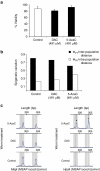Cytosine methylation regulates oviposition in the pathogenic blood fluke Schistosoma mansoni
- PMID: 21829186
- PMCID: PMC3265374
- DOI: 10.1038/ncomms1433
Cytosine methylation regulates oviposition in the pathogenic blood fluke Schistosoma mansoni
Abstract
Similar to other metazoan pathogens, Schistosoma mansoni undergoes transcriptional and developmental regulation during its complex lifecycle and host interactions. DNA methylation as a mechanism to control these processes has, to date, been discounted in this parasite. Here we show the first evidence for cytosine methylation in the S. mansoni genome. Transcriptional coregulation of novel DNA methyltransferase (SmDnmt2) and methyl-CpG-binding domain proteins mirrors the detection of cytosine methylation abundance and implicates the presence of a functional DNA methylation machinery. Genome losses in cytosine methylation upon SmDnmt2 silencing and the identification of a hypermethylated, repetitive intron within a predicted forkhead gene confirm this assertion. Importantly, disruption of egg production and egg maturation by 5-azacytidine establishes an essential role for 5-methylcytosine in this parasite. These findings provide the first functional confirmation for this epigenetic modification in any worm species and link the cytosine methylation machinery to platyhelminth oviposition processes.
Figures







References
-
- King C. H. & Dangerfield-Cha M. The unacknowledged impact of chronic schistosomiasis. Chronic Illn. 4, 65–79 (2008). - PubMed
-
- van der Werf M. J. et al.. Quantification of clinical morbidity associated with schistosome infection in sub-Saharan Africa. Acta Trop 86, 125–139 (2003). - PubMed
-
- Cioli D. & Pica-Mattoccia L. Praziquantel. Parasitol. Res. 90 (suppl. 1), S3–S9 (2003). - PubMed
-
- Hockley D. J. & McLaren D. J. Schistosoma mansoni: changes in the outer membrane of the tegument during development from cercaria to adult worm. Int. J. Parasitol. 3, 13–25 (1973). - PubMed
Publication types
MeSH terms
Substances
Grants and funding
LinkOut - more resources
Full Text Sources
Other Literature Sources

